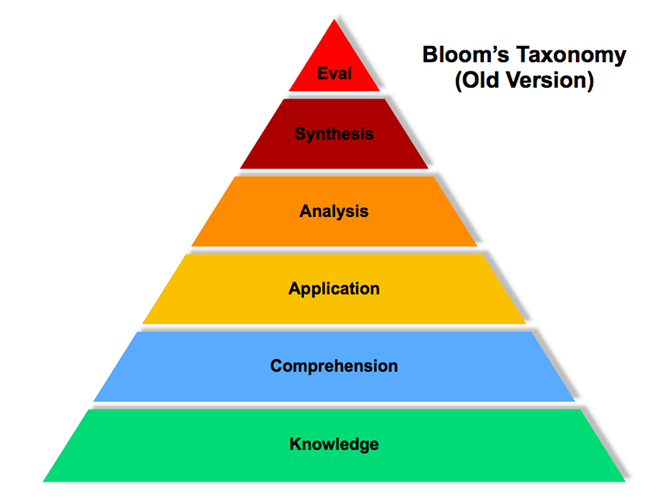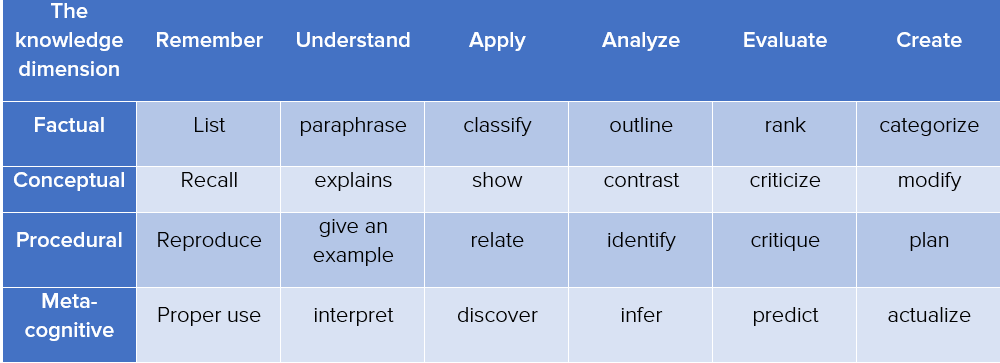What is bloom’s taxonomy in education??
Bloom’s Taxonomy
Bloom’s Taxonomy is a model of hierarchy — a method of classifying educational learning into levels of complexity and specificity. The Bloom’s model consists of three lists that covers the learning objectives in cognitive, effective and sensory domains.
The hierarchy of cognitive domains Bloom’s taxonomy.
The cognitive domain involves knowledge and the development of mental skills. The recall or recognition of facts, patterns, and concepts that serve in the development of intellectual abilities and skills are categorized under the cognitive domain. There are six major categories of cognitive processes
The cognitive list contains the three lower levels- knowledge, namely the
- Recalling,
- comprehension, and
- application
comprising the basics, and the higher levels includes
- analysis,
- synthesis, and
- evaluation.
The model was named after Benjamin Bloom, who chaired the committee of educators that devised the taxonomy. Also, the Bloom’s model has been updated several times since it was first introduced, to account for the needs of the 21st century.
Revised version of the Bloom’s taxonomy
In Krathwohl and Anderson’s revised version of the Bloom’s taxonomy, they combine the cognitive processes with the first three levels of knowledge to form a matrix. And they also added an another level of knowledge — meta cognition to form a matrix.

